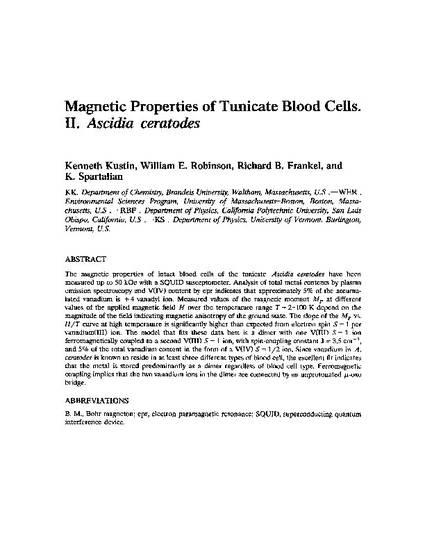
The magnetic properties of intact blood cells of the tunicate Ascidia ceratodes have been measured up to 50 kOe with a SQUID susceptometer. Analysis of total metal contents by plasma emission spectroscopy and V(IV) content by epr indicates that approximately 5% of the accumulated vanadium is +4 vanadyl ion. Measured values of the magnetic moment MP at different values of the applied magnetic field H over the temperature range T = 2–100 K depend on the magnitude of the field indicating magnetic anisotropy of the ground state. The slope of the MP vs. H/T curve at high temperature is significantly higher than expected from electron spin S = 1 per vanadium(III) ion. The model that fits these data best is a dimer with one V(III) S = 1 ion ferromagnetically coupled to a second V(III) S = 1 ion, with spin-coupling constant J = 3.5 cm−1, and 5% of the total vanadium content in the form of a V(IV) S = 1/2 ion. Since vanadium in A. ceratodes is known to reside in at least three different types of blood cell, the excellent fit indicates that the metal is stored predominantly as a dimer regardless of blood cell type. Ferromagnetic coupling implies that the two vanadium ions in the dimer are connected by an unprotonated μ-oxo bridge.
Available at: http://works.bepress.com/rfrankel/55/
